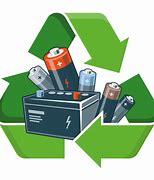 From 4 September 2023, HSE inspectors will be carrying out inspections of construction sites, focusing on the health risks of moving and handling materials on site.
From 4 September 2023, HSE inspectors will be carrying out inspections of construction sites, focusing on the health risks of moving and handling materials on site.
Around 42,000 construction workers suffer musculoskeletal disorder (MSDs) which can cause years of agonising aches and pains.
Serious aches, pains and strains can affect every part of someone’s life.
Construction site inspections focused on moving and handling in materials throughout September and October.
If you don’t know where to start and what is needed, we can do a full health and safety audit on your premises.
Contact us for further information.
Every year since 2003, people celebrate National Positivity Day or Positive Thinking Day on September 13. It’s a day to ignore our fears and worries (even if it’s just for a day!) and focus solely on the good in our lives, spread happiness, and be kind to ourselves and others.
If it’s your first time learning about Positive Thinking Day or you need more ways to celebrate the annual tradition, I’ve got a few ideas that can boost your positivity.
And if you practice these ideas daily or as often as possible (instead of once a year), you’ll become a more optimistic, resilient, and happy person.
If you need advice or wish to talk, contact us! 
Contact us for further information.
EDIT
Our parachute jump is this week. We have raised 3/4 of our target. Thank you to those who have sponsored our event. To those who still wish to, they still have time.
Thank you.
Emma & Kerry
x
Emma &Kerry have been great friends for many years. They have taken on many challenges together.
This year they plan on doing a challenge to raise money for charity by doing something exciting. They have decided to do a parachute jump in Whitchurch on 24th August 2023. Now some people may think that they have lost their minds but they are both looking forward to supporting each other with this challenge.
They have decided to choose a charity each and split the money between the two charities.
Emma
Her chosen charity is the Cardiology Department at the Queen Elizabeth Hospital, Birmingham.
A cardiologist is a healthcare provider who can treat chest pain, high blood pressure and heart failure, as well as problems with heart valves, blood vessels and other heart and vascular issues. They can order tests like electrocardiograms, echocardiograms and CTs (computed tomography) to find out what’s wrong
Her reason for choosing this charity is because they help her husband Eric and others to gain some normality and independence in their day to day lives.
She ran a half marathon at Lake Vyrnwy to raise money for them in 2018!
To find out more about them, follow this link. https://www.nhs.uk/services/hospital/queen-elizabeth-hospital/RJ231/departments/SRV0014/cardiology/
Kerry
Her chosen charity is SYST Shropshire Youth Support Trust.
SYST is a registered charity that offers holistic and bespoke support to young people who are not in education, employment or training. So far the trust has supported nearly 2500 young people.
Her reason for choosing this charity is so the trust can assist many more young people to build their confidence by offering employment support, wellbeing support, or even helping them to set up their own business!
To find out more about them, follow this link. https://www.systbusiness.co.uk/
The money that is being raised will be collected by UK Skydiving Adventures, they will then issue payment to our chosen charities.
Emma and Kerry hope that you can offer sponsorship to help them to raise funds to support their chosen charity.
Thank you.
Emma Woodhouse is fundraising for UK Skydiving Adventures | Give as you Live Donate
Workplace washrooms, aside from office areas, are one of the most used parts of any institution. Whether you’re a small or large-scale business, keeping the washrooms clean, safe and well-furnished is crucial for general health and safety but also additional aspects such as employee wellbeing and satisfaction. As well as keeping the space clean, businesses must also ensure they are keeping on top of workplace regulations, potential hazards and signage to ensure employees and visitors are using the facilities safely.
Whether it’s a cooperate office, warehouse or salon, maintaining your workplace washroom should be a priority for any business. There are also a number of legal requirements that must be met in agreement with the Workplace (Health, Safety and Welfare) Regulations of 1992. Here are some essential features to include in terms of safety and regulations.
Placing signage around your workplace provides easy access and understanding for any employees, clients or visitors. Ranging from exit signs to hand washing stations, here are some common safety signs surrounding a workplace washroom and why they’re important for your business and users.
Cubicle signs: One of the most obvious signs included in a washroom would be the entrance sign to each facility, ensuring all users know where they are going but also enter the right one. In large offices, there might be more than one of these signs for those who need to walk a further distance. These signs will also offer guidance to facilities such as baby changing areas, shower rooms, restrooms, prayer rooms or disabled toilets.
Exit signs: For many reasons, employees or visitors can become distressed or isolated when using a washroom, leaving them confused or overwhelmed, especially when mental or physical health is involved. Clear exit signs can be valuable for visual aid and prevention of panic but also for those who have never been to the workplace before and aren’t sure of their surroundings.
Hygiene signs: Many businesses place hygiene signs such as hand wash guidance, drying instructions and sanitary care to ensure each user is meeting hygiene standards and keeping both themselves and others safe. Since the pandemic, this has become even more prominent as well as supplying additional care such as hand sanitiser, sensor equipment and distance markings.
Temperature guides: For institutions such as schools or community centres, investing in water temperature guides can help to avoid burning hazards and help users to understand how the taps function.
Cleaning and wet floor signs: Most people have come across a wet floor sign or cleaning sign when at work or in public. These signs make sure users are aware that the facility is either out of use or they might come across wet surfaces and potential slip hazards.
Disabled and accessible toilets: When installing a disabled toilet cubicle, it’s important to also remember these facilities may require additional instructions or signs such as alarm/support instructions. The Equality Act 2010 states that signposting disabled signs is essential. Easily-seen labels and signs are a baseline requirement.
One of the most important elements of having and maintaining a workplace washroom is ensuring you are meeting all the requirements and regulations set by the government. As these facilities are so prominent in terms of hygiene, health and safety, it’s necessary for every business to meet these guidelines to create a space which is safe and easy for everyone to use throughout the day.
These regulations cover different aspects of a workplace and washroom including dimensions and space, lighting, temperatures, fumes, ventilation, maintenance, inclusivity and cleanliness. As part of these regulations, businesses might also operate specific training programmes, risk assessments and regular checks throughout the facilities to ensure health and safety are consistently maintained and each staff know the key points.
Contact us if you require further information.
Guest Blog
Author details: Chris Kightly, Managing Director, Inspired Washrooms
 Health and safety on waste sites and when managing waste has never been so important. There are so many hidden dangers and hazards from, for example:
Health and safety on waste sites and when managing waste has never been so important. There are so many hidden dangers and hazards from, for example:
National Operational Guidance (NOG) that has been written for the UK Fire and Rescue Service (FRS) reports over 300 waste fires per year. And according to Material Focus batteries cause “three and half times more” fires in the waste stream than previously reported. They also shared that more than 700 fires in bin lorries and recycling centres were caused by batteries that had been dumped into general waste.
One of the biggest challenges when dealing with waste fire are deep seated fires which start at the centre of a rubbish pile (typically there are two types of waste fires, surface fires and deep-seated fires).
Don’t let waste build up. When dealing with waste on a waste site ensure that there is a process in place to separate, segregate and dispose of the waste. The risk of fire is greater when there is more waste for longer periods of time. The more waste there is the further a fire will spread and larger piles are more likely to self-combust if stored for longer periods of time. To reduce the risk, reduce the amount of waste being stored.
Segregation is important, ensure there are gaps, spaces between piles of waste, most guidance suggests having breaks of at least 6m.
Ensure the site is secure and has CCTV; arson can be a big problem on waste sites.
Ensure that the site has a strict no smoking policy.
The UK FRS NOG fires on waste sites guidance is a useful resource as is the Waste Industry Safety and Health Forum (WISH) document, Reducing fire risk at waste management sites.
Carry out a risk assessment that:
The BBC recently reported that single use vapes are sparking surges in fires at UK waste sites. They indicated that a whopping “1.3million disposable e-cigarettes discarded every week often end up in general waste and their broken batteries are highly flammable”. The document suggests that many waste sites are now using “artificial intelligence to detect vapes and their lithium-ion batteries, as well as installing thermal imaging cameras and automatic foam jets.”
Costs and impacts to the industry
Insurance companies are becoming nervous and many are refusing to insure waste sites, or are imposing huge annual premiums.
A study carried out in 2021 suggests that lithium-ion batteries are responsible for almost half of the UK’s waste fires with an estimated cost of around £158m to the UK economy.
When there are fires on waste sites, the environmental impact is significant which can result in fines being imposed by the Environment Agency (EA) or Health and Safety Executive (HSE).
Many consumers do not understand the problems or risks and even the hazards associated with batteries. Typically, they are not taken to local battery disposal bins (often provided at local supermarkets), and they are hidden in their usual household waste.
Scott Butler, Executive Director of Material Focus said: “People should never bin their electricals or their portable batteries. If they can, they should remove any hidden batteries from their electricals and recycle the batteries and electricals separately. If they can’t remove the batteries, they should recycle their electricals separately as always. Having listened to the numerous stories of flames engulfing waste and recycling trucks as they drive down residential streets, it’s important that we all take action now to keep our streets, householders, waste and local authority staff, and fire fighters safe. People can find their nearest recycling point for batteries and electricals by visiting our recycle your electricals website.”
Mark Andrews, National Fire Chief’s Council Waste fires lead said: ” We urge people to recycle electricals and batteries and not to dispose of them with general household waste. People are often surprised to hear that batteries can cause fires in both bin lorries and waste plants, but they do and as we use and dispose of more electronic devices these incidents are not rare. These fires can be challenging for fire services to deal with, have a significant impact on local communities and present a real risk to staff working on lorries and waste plants. Everyone can do their bit and prevent fires by ensuring they dispose of electrical items correctly.”
Lithium batteries are extremely challenging as damaged and defective batteries are significantly more dangerous as they can lead to thermal runaway. Therefore, it is important to raise awareness and improve the way that consumers dispose of these batteries. Many are calling for a change in legislation in fact The British Metal Recycling Association (BMRA) has called for new rules to prevent households throwing away unwanted electrical equipment.
Problems with lithium batteries include:
Warning signs that a lithium-ion battery or cell is likely to fail include:
Until the safe disposal of lithium batteries is more heavily regulated it is important to take care when dealing with waste lithium batteries. Always ensure that a risk assessment is carried out and that there are suitable and sufficient controls in place to minimise the consequences. If in doubt, seek advice from an expert.
Please contact us if you require further information.